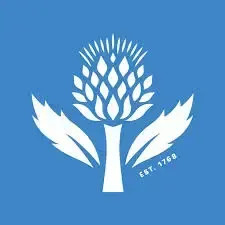The term “Persian” resonates with a rich history, a vibrant culture, and a legacy that has shaped civilizations. But when people ask, “Persian People Are From Where?”, the answer is both geographically specific and culturally expansive. Persian people primarily originate from Iran, a country historically known as Persia. This region in the heart of the Middle East is the ancestral homeland of the Persians, an ethnic group distinguished by their language, cultural heritage, and historical contributions.
To understand where Persian people are from, it’s essential to delve into the historical context of Persia and its evolution into modern-day Iran.
Tracing the Roots: Ancient Persia and the Iranian Plateau
The name “Persia” itself is derived from “Parsa,” the name of Indo-European nomadic tribes who migrated to southern Iran around 1000 BCE. This area, known as Persis (modern-day Pars), became the cradle of Persian civilization. The first written records of the Parsa people appear in 9th-century BCE Assyrian annals.
As the Parsa, under dynasties like the Achaemenians (559–330 BCE), expanded their political influence, the name Persia started encompassing the entire Iranian plateau in the eyes of outsiders, particularly the ancient Greeks. This era marked the rise of the vast Persian Empire, a superpower of its time, known for its administrative prowess, cultural flourishing, and military might. Figures like Cyrus the Great and Darius I established a legacy that extended far beyond the geographical boundaries of Persia itself.
 Ruins of Persepolis, Iran, showcasing the grandeur of ancient Persian architecture.
Ruins of Persepolis, Iran, showcasing the grandeur of ancient Persian architecture.
Iran: The Modern Geographical Anchor of Persian Identity
While historically known as Persia, the country officially adopted the name Iran in 1935. Therefore, when asked “Persian people are from where?”, the contemporary answer points directly to Iran. Iran is not merely a modern political entity; it is the direct continuation of the historical and cultural space where Persian identity was forged.
The Iranian plateau, the geographical heartland, has been the constant throughout Persian history. Even after conquests by figures like Alexander the Great and subsequent dynasties, the core cultural identity and linguistic continuity remained strong in this region. This geographical anchoring in Iran is crucial to understanding the origins of Persian people.
Language: The Unifying Thread of Persian Identity
Beyond geographical location, language serves as a powerful unifying force for Persian people. Persian, also known as Farsi, is the language that binds Persians together, regardless of where they reside today. This language belongs to the Indo-Iranian branch of the Indo-European language family, highlighting ancient connections to other cultures across Eurasia.
Furthermore, variants of Persian, such as Dari in Afghanistan and Tajikistan, are also spoken in neighboring regions, demonstrating the linguistic reach of Persian culture. This linguistic bond reinforces the shared heritage and identity of Persian people, even across geographical borders.
Cultural and Religious Tapestry
Persian identity is not solely defined by geography or language but also by a rich cultural and religious heritage. While the majority of Persians today practice Shia Islam, this was not always the case. Before the 7th-century Muslim conquest, Zoroastrianism, founded by the ancient prophet Zoroaster, was the dominant religion. Even today, a small Zoroastrian community persists in Iran and larger communities exist in South Asia, representing a continuous thread of pre-Islamic Persian heritage.
Additionally, the Baháʼí Faith, originating in Persia, though now a minority religion within Iran, adds another layer to the diverse religious landscape associated with Persian people. This religious and cultural diversity underscores the long and complex history that has shaped Persian identity.
Persian Society, Arts, and Enduring Legacy
Persian society, both in urban and rural settings, exhibits a sophisticated structure and a deep appreciation for arts and crafts. From intricate carpets and metalwork to magnificent architecture, Persian artistry is world-renowned. The literary tradition, stretching back to Zoroaster and encompassing figures like Rumi and Omar Khayyam, showcases the intellectual and creative depth of Persian culture. Holidays like Nowruz, the Persian New Year, are celebrated with fervor, highlighting the enduring cultural traditions.
In conclusion, when considering “Persian people are from where?”, the answer is rooted in Iran, historically known as Persia. This geographical region, the Iranian Plateau, is the ancestral homeland. However, Persian identity is also shaped by language, culture, and a rich history that extends far beyond modern political boundaries. Persian people are from a place with a profound and lasting impact on the world, and their heritage continues to thrive in Iran and across the globe.
